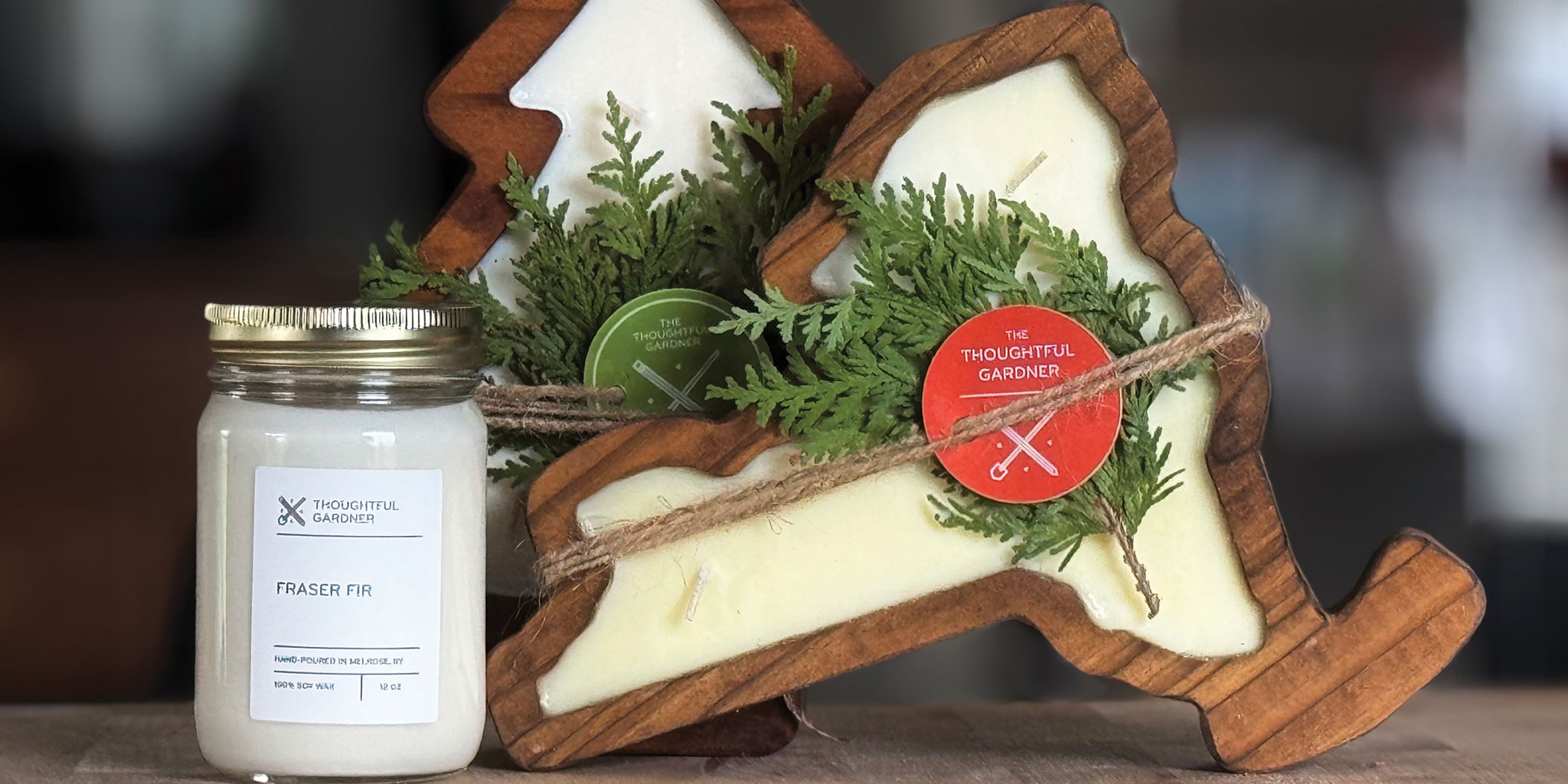Picture a sea of Spanish bluebells, a purple carpet of crocuses, a bed of red poppies. These are just a few of the show stoppers in full bloom this month at the Berkshire Botanical Garden (BBG) in Stockbridge, Massachusetts.
Celebrating their 80th anniversary this year, and less than an hour from the Capital Region, the Berkshire Botanical Garden features 26 display gardens and collections with over 2,000 varieties of mostly indigenous flower and shrubs. A lot of flora is packed into the Garden’s 15 acres. Some of the highlights are an old-fashioned mixed border perennial garden, pond and rock gardens, an arboretum, annual displays and a small garden shed area designed by none other than Martha Stewart. Aspiring gardeners and the casual admirer will find the terrain easy to navigate with a walkway that winds through all the displays.
May provides garden enthusiasts with an explosion of color and fragrance. Perennials pop up before annuals take over the grounds. This time of year there is a splendid array of daffodils, azaleas, magnolias and rhododendrons. Particularly spectacular are the crabapple trees with their white, pink and red flowers and the primula, better known as primroses, their tall stems topped by whorls of flowers. Next month the big showy plants like roses and peonies take center stage.
What’s new this year?
A special exhibit called “Wind” is the new segment of a four-part series celebrating the elements. R.T. Facts, an antiques distributor in Kent, CT, has supplied the gardens with wind chimes, whirligigs and weather vanes that are scattered throughout the grounds. Visitors will delight as they come upon these charming artifacts along the garden trail.
A must-see stop on the tour is the greenhouse area, featuring a solar greenhouse and a display greenhouse with tropical plants and desert flora. The latter was developed with a grant from The Fitzpatrick Family Trust. The third greenhouse is where BBG’s horticulturists grow the plants that are in the gardens, some from seed, others from seedlings. Tending the greenhouses as well as all of the display areas is a team of two senior gardeners, two seasonal gardeners, and three horticultural interns, supervised by Dorthe Hviid, director of horticulture. This year’s interns are college students hailing from Louisiana, Minnesota and Virginia.
Don’t miss the gift shop’s great selection of books, gardening tools, local honey and herbs that are made on the premises. The Herb Garden, established in 1937, is tended by dedicated volunteers who actually make seasonings and salad dressings from the herbs and sell them to the public.
“There are grander gardens in the Berkshires, but Berkshire Botanical Garden is the place you come to actually learn about flowers and plants and how they might adapt to your own backyard space,” said Brian Cruey, communications and marketing director. “People come here to enjoy our natural setting, but they also come to learn. We are a resource for the community and beyond, and there is always someone on hand to answer visitor questions. Our staff is passionate about gardening and horticulture and I encourage visitors to approach them while touring the facility.”
How it all began
BBG is a not-for-profit, membership-supported education organization and has been referred to in the book Great Gardens of the Berkshires as “a glistening community gem.” The Lenox Garden Club established what was first known as the Berkshire Garden Center in 1934 on a parcel of land donated by Bernhard and Irene Hoffman. Numerous botanical gardens including the renowned New York Botanical Garden gave floral gifts to the burgeoning organization. In 1936 more acreage was donated by the Hoffmans expanding it to its current size. Included in the gift was the 1790 farmhouse, which is known today as the Center House and is utilized for office space, the herb garden kitchen and a meeting hall.
World War II brought an exciting addition to BBG with the establishment of a Victory Garden which provided a source of fresh vegetables and fruits to community tables during a time of nationwide rationing. In fact, the Garden received a national Victory Garden Institute award in recognition of its “contribution to the war effort.”
Another highlight of the Garden’s storied history was its participation in the New York World’s Fair in 1939.
Much has changed since the origination of the Garden, but one thing has remained constant: the generosity of individuals and institutions has always played an important role in the development and advancement of Berkshire Botanical Garden. The Garden has never lost sight of its mission: to create a “place of serenity and beauty as well as provide an essential component for a healthy community.”
A place to learn
As an educational resource to the public, people come from all over, including the Capital Region. Frequent visitors include the Fort Orange Garden Club based just outside of Albany.
The ties between the Fort Orange Garden Club and the BBG go back to the Garden’s early decades. Audrey Hawkins, a past president and active member of the former organization, is a fountain of knowledge about this relationship. According to Hawkins, one of BBG’s early enthusiasts was Betty Corning, wife of Erastus Corning II, Albany’s mayor from 1942 to 1983.
Elisabeth Carey, director of education at BBG, emphasizes that the Garden reaches out to both home gardeners and professionals with class offerings from beginner to advanced. There is programming year round as well as certificate programs. There are classes every weekend offering topics as diverse as beekeeping, perennial bed installation, and water color art classes.
“People come from an hour-and-a-half radius of Stockbridge with a third of enrollees coming from the Capital Region,” said Carey. “Gardening education has no age limit. Our class enrollees range from 5 to 85 years old. “
Adding to the mix of BBG offerings is a series of week-long summer camp experiences for children ages 5 to 10. The goal is to provide a fun, yet educational, experience for children to learn about horticulture from a hands-on approach. The kids learn how food is grown, how to harvest it, and then how to cook with the produce.
Celebrity connections
Visitors to the Garden may see a familiar face – Massachusetts Governor Deval Patrick is a Garden member and frequent visitor. Jane Iredale, an international cosmetics company based in neighboring Pittsfield, used the BBG for their summer catalog photo shoot. Last fall, the famed handbag company Dooney & Bourke did a photo shoot of their new collection in the gardens.
This year, a large group is coming over from Japan, said Cruey, who urges visitors to become members.
“Every time you come back you are seeing a different place and having a unique experience. The gardens all change constantly. What you see in May is very different from what you see in August.
“In May, the gardens are starting to come to life. The winters are long and cold, so it’s a pleasure to finally see the spring buds and blooms,” he said.
The public is urged to attend the upcoming annual Plant Sale on May 9 and 10 to help the home gardener get started this spring. This year’s theme, “Get Your Hands in the Dirt”, will feature thousands of plants appropriate to northeastern gardens. Highlights are a garden-themed tag sale, a container design station, a silent auction, and succulent wreaths and miniature wall gardens. Regional artisan vendors will display unique items for the garden patio and home with 100% of the profits going to the Garden’s programs.
The gardens are open to the public from May 1 through Columbus Day, 9am-5pm daily. Guided public tours (free with admission and to members) are conducted Wednesday, Fridays and Saturday, at 10 am from June 15 through September 1; guided group tours are also available. The garden terrain is mostly wheelchair-friendly. Visit www.berkshirebotanical.org or call 413.298.3926 for visitor and membership information, directions, class schedules, special events and camp registration. Follow the organization on Facebook, Pinterest, and YouTube.
How does your garden grow?
Spring gardening tips from Berkshire Botanical Garden.
May is a busy time for the Berkshire Botanical Garden as well as for backyard gardeners in the Capital Region. Dorthe Hviid, BBG’s director of horticulture for the past 22 years, oversees the 26 display gardens and collections, three greenhouses and a woodland area. She offers this advice to get your gardens started.
- Above all else, resist the temptation to walk onto beds that are still wet from winter snow and spring rain. Compacting the soil with your shoes can destroy the soil’s texture. Dorthe suggests standing on the lawn and just working on what you can reach from there, or preferably, just waiting a few days till things dry out.
- Cut back faded foliage from last year and do your spring clean-up if you haven’t already. It’s time to pick up leaves and debris.
- It’s a good month to “side dress” your perennials or woody shrubs. In layman’s terms that means you shouldn’t cover the middle of the plant with compost; rather, go around and just spread it over the sides. Hviid says it’s a good way to enrich soil in a natural way and encourage gardeners to compost. For those who aren’t so adventurous, nurseries sell it in bags.
- It’s a great time to divide perennials. You can replant them to make a bigger clump or put them in other places in your garden. It’s easy to do before the flowers are fully showing and also avoids any damage that might be done later in the season.
- Don’t plant annuals or tropicals until the end of May due to the threat of frost. If it has been really warm in May, check the weather forecasts to see if you can plant one week earlier. However, May is a good time to plant trees, shrubs and perennials.








